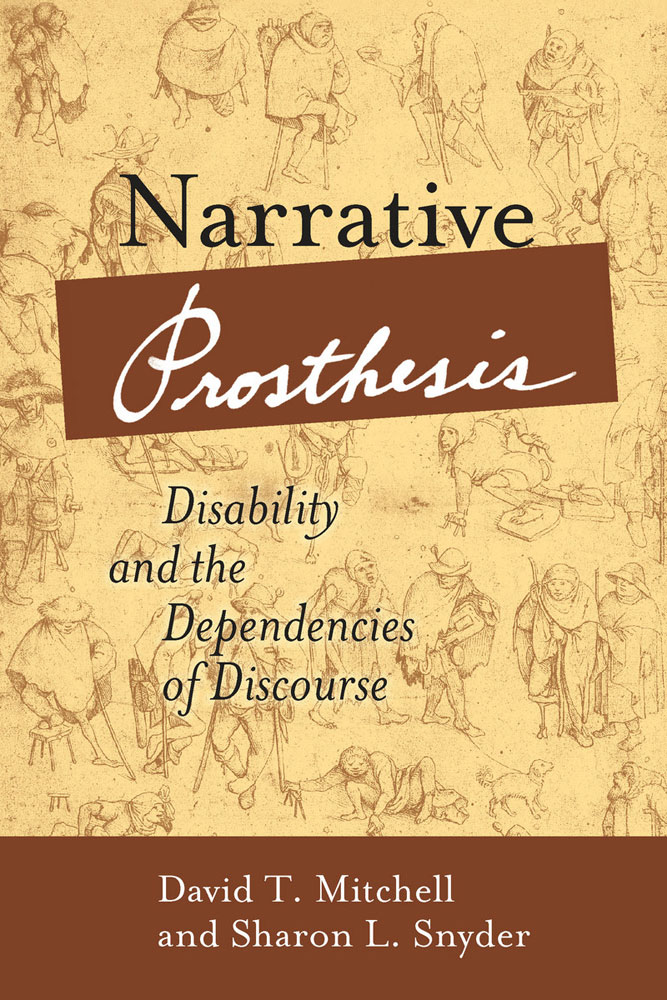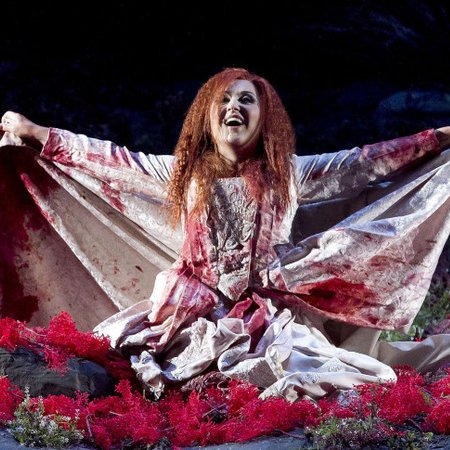In recent years, the practice of disability mimicry has been considered in a number of mainstream publications, particularly in reference to non-disabled performers playing disabled roles in Hollywood. In a 2001 interview, the American playwright and disability activist Cheryl Marie Wade reflected on the practice of disability mimicry, suggesting that ‘[t]o some extent, that’s like a white guy putting on blackface. It’s just as offensive’. Frances Ryan’s article for The Guardian – ‘We wouldn’t accept actors blacking up, so why applaud “cripping up”?’ – is one of many that emerged in newspapers, magazines, and blogs to challenge the practice of disability mimicry following Eddie Redmayne’s appearance as Stephen Hawking in The Theory of Everything (2014). More recently in The Guardian, Penny Pepper has asked, ‘Is it ever OK for non-disabled actors to play disabled roles?’
These pieces are characteristic of the increasingly drawn comparison between disability mimicry and blackface within the mainstream media in recent years. Both disability mimicry and blackface have been long-standing issues in opera production, with the latter perhaps receiving more critical focus than the former, both in scholarship and the mainstream media. However, comparing cultural representations of minority identities, as well as use of the term ‘cripping up’, runs to risk of oversimplifying the lived experiences of both people of colour and people with disabilities. The filmmaker and human rights activist Dominik Evans, who runs a well-known blog under the moniker ‘the Crip crusader’, asks his readers to ‘consider the fact that there are disabled black people who not only have to deal with disabled mimicry, but also blackface. Comparing the two can make these individuals feel invisible’. The relationships between disability and minority ethnicities has also been considered in scholarship. In The Oxford Handbook of Music and Disability Studies, both Sean Murray and Daniella Santoro unpick the historical relationship between representations of blackness and disability in the United States, with the former stating that ‘Historically, cultural representations of African Americans were deeply intertwined with disability, routinely conflating race and disability as stigmatizing bodily conditions’. The casting of non-disabled performers to play disabled roles and the associated simulation of the disabled body is defined variously as ‘Disability Drag’, ‘cripping up’, ‘cripface’, and ‘Disappropriation’, but I use the term ‘disability mimicry’.
Disability scholars and activists alike have deliberated upon this issue, often highlighting the inherent problems associated with attempts to ‘perform’ disability. In 2019, lively debates about disability mimicry are becoming increasingly prevalent, particularly in relation to Hollywood portrayals of disability. yet, whilst many texts discussing the notion of disability mimicry refer to film and television, the issues surrounding the performance of disability are somewhat complicated by live performance. In opera, the reliance on disability mimicry is striking, but conversations surrounding this problematic practice are lacking.
For the disability theorist Tobin Siebers, one of the key disadvantages of the practice (which he terms ‘disability drag’) is that ‘disability appears as a facade overlaying able-bodiedness’. In essence, he refers to the fact that the presence of non-disabled performers in disabled roles highlights their able-bodiedness and therefore constitutes the erasure of authentic disability. Siebers draws a comparison between disability mimicry and both blackface minstrelsy and cisgender and straight actors playing LGBTQ characters, suggesting that casting performers without the subjective experience of these groups not only expunges that group’s identity from the public view, but also ‘transforms its reality and its fundamental characteristics’. His approach runs the risk of amalgamating frequently marginalised communities into one category of “Otherness”, but he does make an interesting point with regards to disability. He suggests that disability mimicry represents actors’ ‘able-bodiedness as much as their pretence of disability’, thus ‘insinuating ability into [disability’s] reality and representation’.
In a production of Zemlinsky’s Der Zwerg at Opera Graz in April 2017, Aleš Briscein (in the title role) shuffled onto the stage wearing his shoes on his knees in an attempt to imitate short stature. Though he returned to his feet in several later scenes, the chamberlain (played by Wilfred Zelinka) then entered the stage on stilts in a questionable effort to maintain the illusion of dwarfism. Towards the end of the performance, following the protagonist’s discovery of his appearance in the final scene, Briscein also seemed to adopt a limp. The performer’s alteration of his gait only in the final moments of the production came across as careless, even cartoonish.

Often, the erasure of disability in performance is complicated by its simultaneous exhibition or amplification, by which it becomes a spectacle to be consumed by the audience. This can also be understood as a form of ‘enfreakment’, a term used by David Hevey to describe both the appropriation of disability as a metaphor for personal struggle and the stylized presentation of physical difference for the benefit of a ‘normal’ audience. The process of enfreakment is problematised in light of disability mimicry given the fact that the disability presented is performed as opposed to real. Siebers refers to disability mimicry as ‘a variety of the masquerade […] providing an exaggerated exhibition of people with disabilities but questioning both the existence and permanence of disability’. The sense of exhibition described by the author is perhaps more palpable where disability is represented on stage, particularly when it is depicted by non-disabled performers. In fact, the simultaneous exhibition and erasure of disability falls into the category of Carrie Sandahl’s representational conundrums.
In the Graz production, for example, Briscein’s attempt to signify short stature by walking on his knees, as well as his adoption of a limp at the end of the production, painted a sensationalised picture of physical difference, whilst the appearance of the chamberlain on stilts only exacerbated the sense of caricature and offered disability as a spectacle to be consumed by the audience. This ‘performance’ of disability was therefore very much in keeping with typical modes of enfreakment, yet, the conundrum presented itself in the fact that, whilst this hyperbolic performance encouraged the gaze of the audience, it did so while concealing disability from the public view, as the disability presented was not real.
The use of disability mimicry can also undermine perceptions of disability as real and/or permanent. Disability narratives in opera, particularly comic opera, often present disability as transitory, with the elimination of disability from a plot (typically by way of a cure) coinciding with a return to order or normality. In Graz, the ‘temporary’ nature of disability was signified by the blatancy of the fact that the body of the performer playing Zemlinsky’s Dwarf was inconsistent with his simulated stature. However, when disability is represented on stage, the immediacy of the live body also enables the erasure of disability following the performance. Indeed, after the enactment of disability on stage, the curtain call provides the opportunity for non-disabled performers to return to and even assert their able-bodied identity to the audience.

The conditions for this process are also met when disability mimicry relies on the use of props, as in David McVicar’s production of Rigoletto at the Royal Opera House, which was most recently revived in the 2017/18 season with Dmitri Platanias in the title role. Here, the protagonist’s deformity was depicted by the performer’s altered bodily demeanour to suggest a hunched back and by the sustained use of crutches. Platanias also played Tonio in Damiano Michieletto’s 2015 production of Pagliacci at the Royal Opera House, where he used strikingly similar props and bodily demeanour.

Petra Kuppers writes about crutches, wheelchairs, white sticks and other disability aids as ‘signholders of disability that can be and are referenced by nondisabled people when they “act” disabled’. When considering the performance of disability and the associated tendency of non-disabled performers to cast aside the corporeal or material properties of impairment following performance, the lack of such ‘signholders’ during the curtain call can emphasise the absence of disability. This erasure, Siebers suggests, can reassure the audience ‘that the threat of disability is not real, that everything was only pretend’. The use of disability aids, altered bodily demeanour and the transformation into able-bodiedness facilitated by the curtain call all emphasise the transitory nature of disability in performance.
Whether as a result of altered gait and bodily demeanour, costuming and make-up or the use of visible disability aids, it would seem that in the theatre, disability mimicry invariably results in disability’s simultaneous exhibition and erasure. A seemingly logical solution to the various issues surrounding the performance of disability is diverse and inclusive casting. On the one hand, casting disabled performers in disabled roles provides a solution to the many problems associated with disability mimicry, yet, it also generates a number of associated questions and contradictions. But that’s a post for another time…










